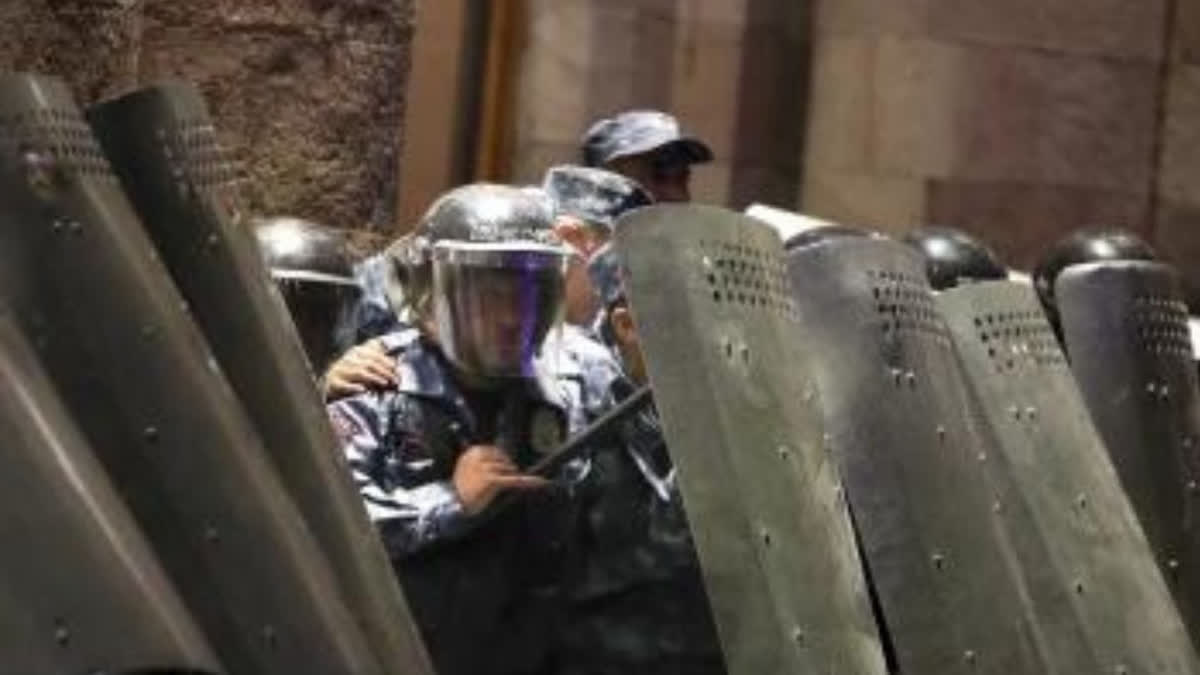New Delhi: The fall of Nagorno-Karabakh, a region in the South Caucasus, to Azerbaijan last week will be a cause of concern for India. New Delhi has been supporting Armenia in its war against Azerbaijan over the disputed region all this while. Armenia and Azerbaijan have been involved in an ethnic and territorial conflict for over three decades now over the disputed Nagorno-Karabakh region. In 1988, ethnic Armenians living in Nagorno-Karabakh demanded the transfer of what was then the Nagorno-Karabakh Autonomous Oblast from Soviet Azerbaijan to Armenia.
Following the collapse of the Soviet Union, these tensions grew into an outright war. In December 1991, the Armenians of Nagorno-Karabakh declared their independence as the Republic of Nagorno-Karabakh with the intention of reunifying with newly independent Armenia. The local Azerbaijanis were opposed to this.
The declaration was rejected by newly independent Azerbaijan, leading to the outbreak of full-scale war with Armenia and Nagorno-Karabakh on one side and Azerbaijan on the other. The First Nagorno-Karabakh War ended with a ceasefire in May 1994, with Armenian forces controlling practically the entire territory of the former Nagorno-Karabakh Autonomous Oblast as well as most of seven adjacent districts of Azerbaijan. The Republic of Artsakh, as it officially came to be known, became a de facto independent country, though closely integrated with Armenia, while its territory remained internationally recognised as part of the Republic of Azerbaijan.
However, intermittent fighting over the region continued after the 1994 ceasefire without significant territorial changes, while long-standing international mediation attempts to create a peace process were initiated by the Organisation for Security and Cooperation in Europe (OSCE) Minsk Group in 1994.
Then, in September 2020, fighting again erupted between Armenia and Azerbaijan over Artsakh, which, observers believe, may have claimed thousands of lives. Azerbaijan recaptured territories, primarily in the southern part of the region. A ceasefire agreement signed on November 10, 2020, between Armenia, Azerbaijan and Russia declared an end to the renewed fighting, and established that Armenia would withdraw from remaining occupied territories surrounding Nagorno-Karabakh over the next month. The agreement includes provisions for a Russian peacekeeping force to be deployed in the region.
This year, on September 19, Azerbaijan launched a sudden military offensive. The very next day, the government of the Republic of Artsakh agreed to disarm, which led to a ceasefire. On September 28, Artsakh president Samvel Shahramanyan signed a decree stating that all state institutions would be dissolved by January 1, 2024, bringing the existence of the republic to an end. The latest fighting has led to 30,000 ethnic Armenians, or a quarter of the population of the disputed region, fleeing to Armenia.
Though India maintains friendly bilateral relations with both the Central Asian nations, it is Armenia that India has backed during the war over Nagorno-Karabakh. New Delhi has openly positioned itself on the side of Yerevan by supplying military hardware. According to reports, India supplied Armenia with Swathi weapons-locating radar. Last year, India and Armenia signed a $250-million agreement under which New Delhi supplied Yerevan with indigenously developed multi-barrel Pinaka launchers, anti-tank rockets, and other range of ammunitions.
So, why is India siding with Armenia?
New Delhi is concerned about Turkey’s imperial ambition of creating a pan-Turkic empire that will cover the Caucasus and parts of Eurasia. It envisions an empire that will comprise all nations and regions where a Turkic type of language is spoken. India has decided to oppose Azerbaijan and its allies, Pakistan and Turkey and Turkey’s expansionist plans.
As an ally of Azerbaijan, Pakistan has supplied men and military to the Central Asian nation to assist in its conflicts. Azerbaijan has reciprocated by offering Pakistan geopolitical, geo-economic and geo-strategic benefits. The aim of seizing Armenian territory is to gain unhindered access forcibly to Turkey, Azerbaijan, Pakistan and other Turkic-oriented nations. At the same time, Turkey, Azerbaijan and Pakistan share a similar stance on Kashmir. While Turkey’s President Recep Tayyip Erdogan had sharply condemned India’s abrogation of Article 370 in Jammu and Kashmir in 2019, Azerbaijani officials have been quoted as saying that they support Islamabad’s stand on Kashmir. This is a cause of major diplomatic concern for New Delhi.
Another reason why India is backing Armenia is the International North-South Transport Corridor (INSTC) in which India has a major stake. The INSTC is a 7,200-km-long multi-modal network of ship, rail, and road route for moving freight between India, Iran, Azerbaijan, Russia, Central Asia and Europe. The route primarily involves moving freight from India, Iran, Azerbaijan and Russia via ship, rail and road. Since the project is not making much progress, Armenia is being seen as a country that can provide a viable alternative corridor instead of through Azerbaijan.
India has not issued any official statement regarding the recent developments in Nagorno-Karabakh till the time of filing of this report. It will be interesting to see how New Delhi will weigh its options now.



